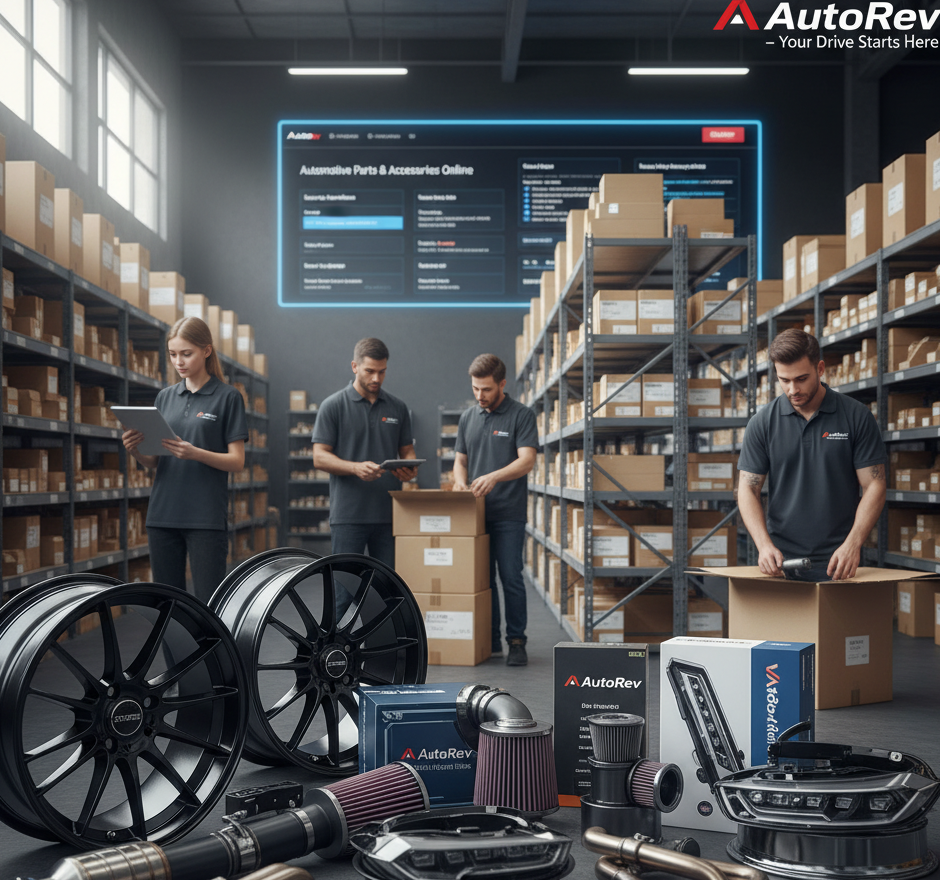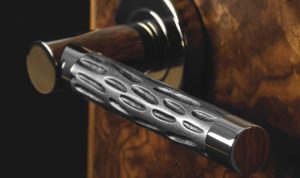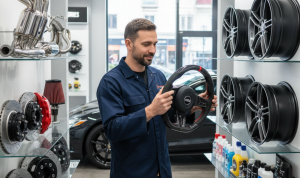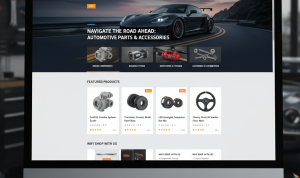The world of automotive parts and accessories is a massive, thriving marketplace. For car enthusiasts, mechanics, and everyday drivers alike, finding the right component can be the difference between a smooth ride and a frustrating breakdown. Whether you’re looking to upgrade your vehicle’s performance, enhance its style, or simply replace a worn-out part, the options are endless. This guide will help you navigate this complex market, providing essential tips for both buyers and sellers to ensure successful transactions and a great experience.
The Booming Business of Auto Parts
The automotive aftermarket industry is a multi-billion dollar business, with a constant demand for everything from engine components and brake pads to custom wheels and infotainment systems. The growth of e-commerce has made it easier than ever to connect buyers and sellers globally, creating a dynamic market where both new and used parts are readily available.
For sellers, this means a vast potential customer base. For buyers, it means a huge selection, often at competitive prices. However, with so many options, it’s crucial to understand the landscape to avoid common pitfalls. This is where knowledge and a strategic approach come into play.
For Buyers: How to Find the Perfect Part
Buying automotive parts, especially online, requires a careful and informed approach. Here are some key steps to ensure you get the right product for your vehicle.
1. Know Your Vehicle Inside and Out
The most critical piece of information you need is your vehicle’s Vehicle Identification Number (VIN). The VIN is a unique 17-digit code that contains all the essential details about your car, including its make, model, year, engine size, and trim level. Providing the VIN to a seller or entering it into an online parts finder is the best way to guarantee compatibility.
You should also be aware of the specific model year, sub-model, and engine type of your car. For instance, a part for a 2015 Honda Civic LX might not fit a 2015 Honda Civic EX, even though they are the same model.
2. New, Used, OEM, or Aftermarket?
When shopping, you’ll encounter a few different categories of parts. Understanding the differences is key to making the right choice for your budget and needs.
- OEM (Original Equipment Manufacturer): These are parts made by the same company that manufactured your car. They are guaranteed to fit and function perfectly, but they often come with a premium price tag.
- Aftermarket: These parts are made by a company other than the original manufacturer. They can be a great, cost-effective alternative to OEM parts. Quality can vary, so it’s important to buy from reputable brands and check reviews.
- Used: Used parts are a great option for those on a tight budget or for hard-to-find components for older or classic cars. When buying used, always inspect the part carefully and ask for photos. A reputable seller will provide a clear description of the part’s condition.
3. Research and Compare
Don’t just buy the first part you find. Use multiple search engines and online marketplaces to compare prices and read reviews. Look for sellers with high ratings and positive feedback. Forums and communities dedicated to your specific car model can be invaluable resources for recommendations and advice.
4. Ask Questions
If you’re unsure about a part’s compatibility or condition, ask the seller questions. A good seller will be knowledgeable and willing to provide detailed information. Ask for more photos, part numbers, and any history the part might have, especially for used items.
For Sellers: How to Succeed in the Auto Parts Market
Selling automotive parts requires more than just listing an item. To stand out and build a reputation, you need to be strategic and professional.
1. Provide Detailed and Accurate Listings
Your listing is your most important tool. A good listing should include:
- Part Name and Part Number: Use the correct, official name of the part and its OEM or aftermarket part number. This is crucial for searchability.
- Compatibility Information: Clearly state which makes, models, and years the part is compatible with. Mentioning specific engine types or trim levels will help potential buyers.
- Condition: Be honest about the condition of the part. If it’s new, say so. If it’s used, describe its condition in detail, noting any scratches, wear, or damage.
- Clear, High-Quality Photos: Take multiple photos from different angles. Use good lighting to show the part’s true condition. Include a photo of the part number if possible.
2. Optimize for Search Engines (SEO)
For your listing to be found on platforms like Google, eBay, or dedicated parts websites, you need to use the right keywords. Think about what a potential buyer might search for.
- Use a descriptive title that includes the part name, part number, make, and model. For example, “OEM Honda Civic 2016-2021 K20C2 Water Pump 19200-5A2-A01.”
- In the description, use long-tail keywords—more specific phrases that buyers are likely to use, such as “used Honda Civic water pump” or “2016 Civic K20C2 water pump.”
- Utilize tags or categories effectively. Most e-commerce platforms have specific categories for different types of auto parts.
3. Set a Competitive Price
Research what similar parts are selling for. Consider the part’s condition, rarity, and demand. Pricing your item too high will scare away buyers, while pricing it too low can make them question its quality. A good price is one that reflects the value of the item while remaining competitive.
4. Offer Excellent Customer Service
Responding quickly and knowledgeably to buyer questions is critical. Be polite, professional, and patient. If there’s an issue with a transaction, work with the buyer to find a fair solution. Building a good reputation as a seller will lead to more sales and positive reviews.
5. Ship with Care
Proper packaging is essential to ensure the part arrives safely. Use appropriate boxes, packing materials like bubble wrap or packing peanuts, and sturdy tape. Always provide tracking information to the buyer so they can follow their package.
The Future is Digital
The automotive parts and accessories market continues to evolve, with new technologies and platforms making transactions smoother and more secure. The rise of specialized apps and online communities has created niche markets for specific car makes and models, allowing enthusiasts to connect directly.
Whether you’re a hobbyist looking for a rare vintage part or a professional mechanic sourcing a reliable component, the key to success is knowledge. By understanding your needs as a buyer and providing value as a seller, you can navigate this exciting and complex marketplace with confidence. Rev up your digital garage, and get ready to hit the road with the perfect parts for your ride.









